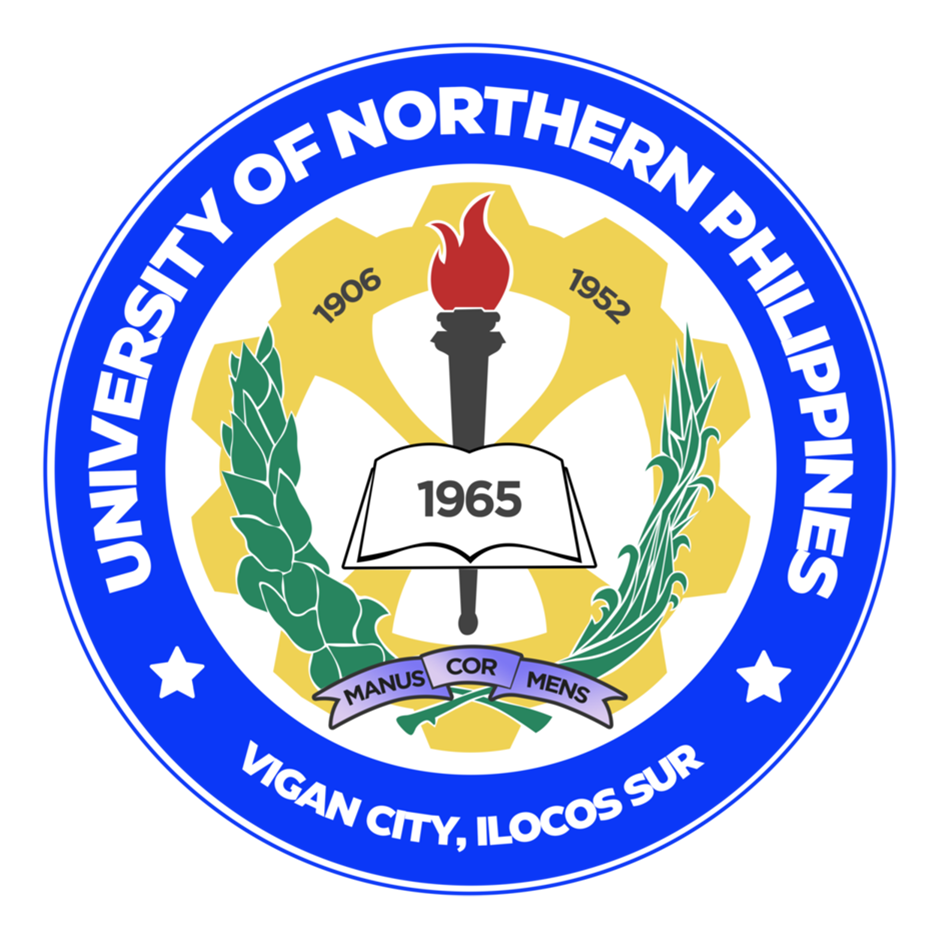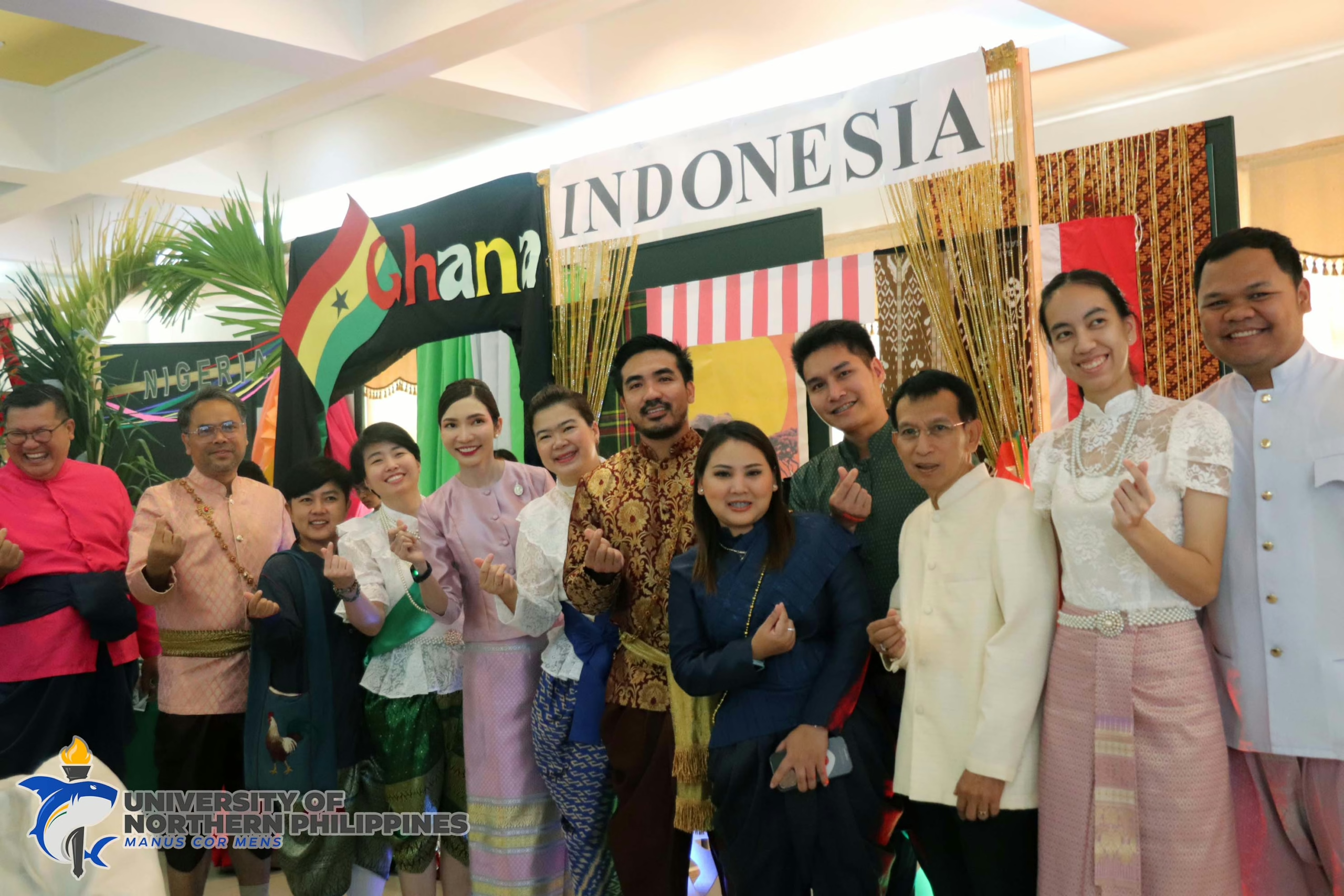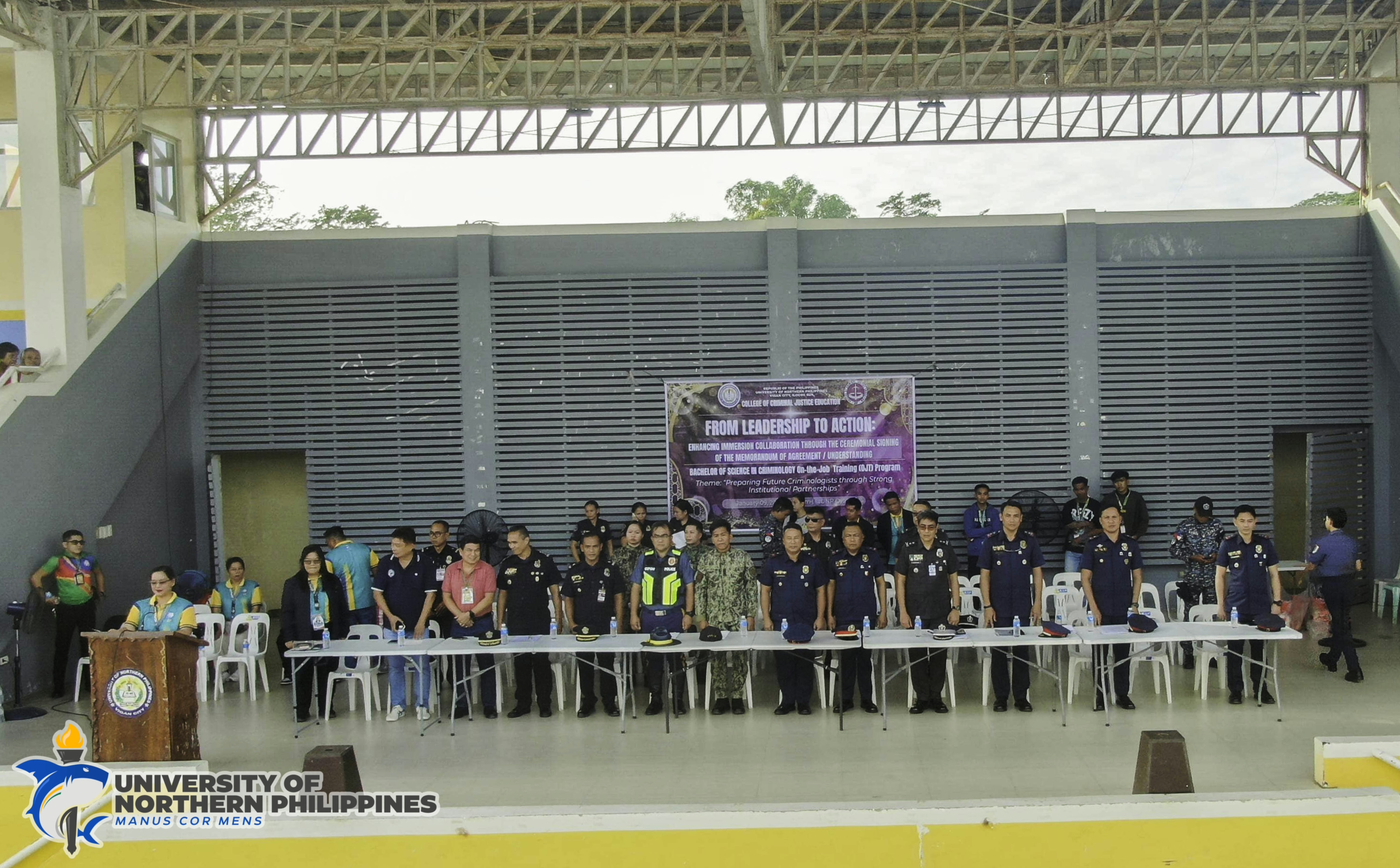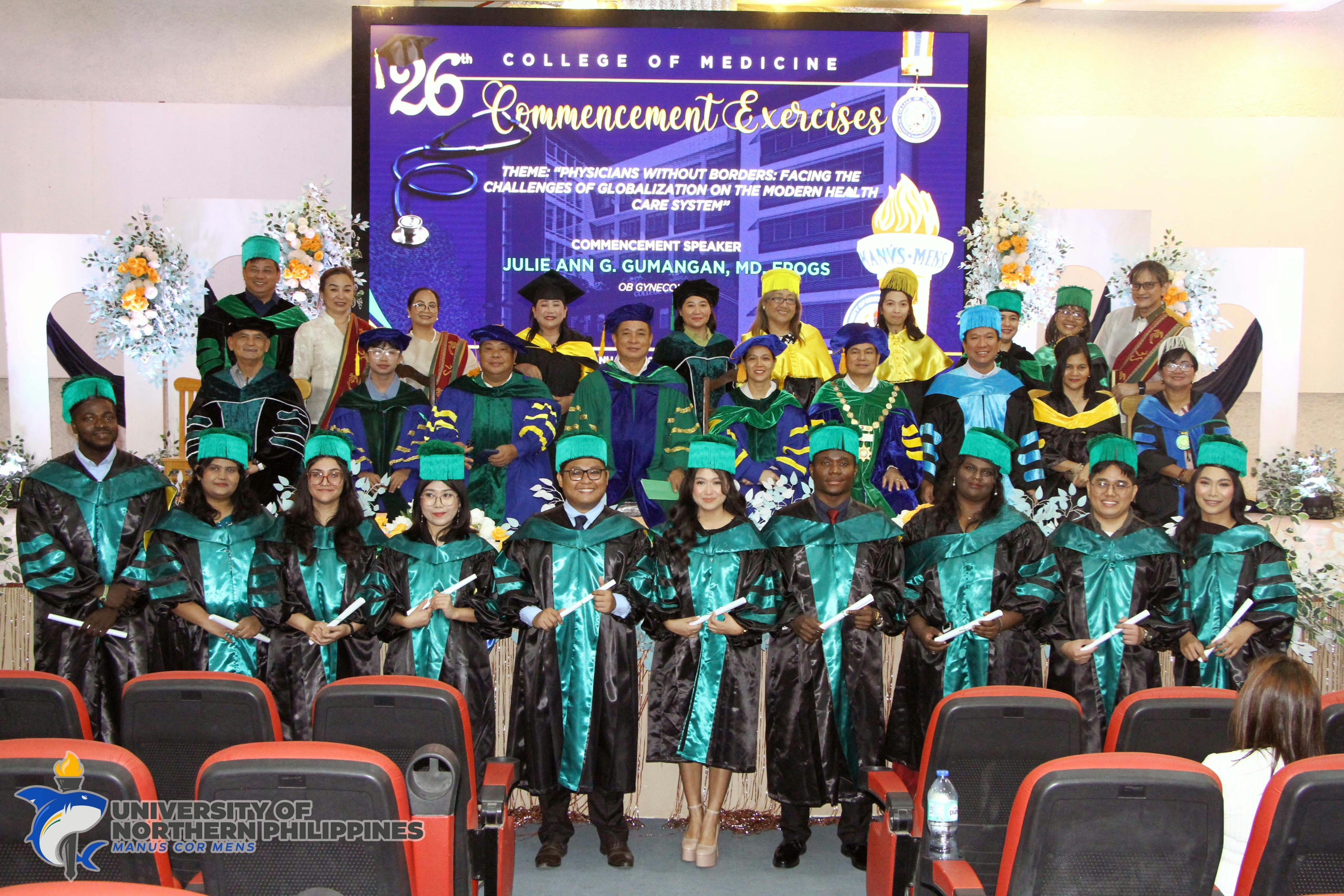International Students’ Day was celebrated on October 11 at UNP Tadena Hall to honor the experiences of foreign students studying at the University of Northern Philippines. The day highlighted the rich cultures and cuisines they bring from their host countries. It served as an opportunity to explore and appreciate the diversity that international students contribute to global education and society.
To celebrate International Students’ Day, the University, through the Office of Student Affairs and Services and the International Affairs and External Linkages Office, organized food festivals and cultural events where international students showcased their traditional dishes.
The events promoted cultural awareness and allowed students to taste the world without leaving their neighborhoods. It also created opportunities for international students to share their culinary heritage and connect with others.
The international students hailed from various countries, namely: Thailand, the United States of America, Benin, India, Ghana, Indonesia, and Nigeria. They brought unique traditions, languages, and perspectives to the said event.
The event featured cultural presentations, allowing students to share their heritage through music, dance, games, and storytelling.
THAILAND
To celebrate the event, students from Thailand prepared tomyumkong, referred to as yum khao ya in their food booth. Tomyumkong reflects the regional ingredients and cooking techniques of Thailand, showcasing the importance of fresh herbs, spices, and local produce in Thai cuisine. The dish typically balances sweet, sour, spicy, and salty flavors which are hallmarks of Thai cooking. It incorporates ingredients like lime juice, fish sauce, and chili. Like many Thai dishes, Tomyumkong is enjoyed in a communal setting, emphasizing the cultural value of sharing meals with family and friends. It is not just a dish but a celebration of Thai culture, flavors, and the importance of community in dining experiences.
The Thai students also prepared a cultural dance called Ram Wong, characterized by simple movements and lively music. Participants danced in a circle. They also showcased the popular festival in Thailand, the Loy Krathong Festival. It is one of the most celebrated festivals in Thailand and takes place on the full moon of the 12th lunar month, typically in November. The name translates to “floating a basket,” symbolizing the release of negative energy and appreciation of water spirits.
They also showcased their traditional clothing. Clothing in Thailand is deeply intertwined with the nation’s identity, history, and regional variations. The traditional Thai outfit for women is known as Chut Thai. It consists of a sampot (a long piece of cloth wrapped around the waist) paired with a blouse and is often made from silk or cotton. Chut Thai is adorned with intricate patterns and colors. While men’s traditional attire includes a chong kraben, a piece of fabric around the waist, often worn with a simple shirt.
The clothing and cuisine of Thailand reflect its culture, history, and regional diversity. The intricate designs and good foods tell a story of the country’s heritage. As Thailand continues to evolve, its traditions remain a vital connection to the past, showcasing the enduring spirit of its people.
UNITED STATES OF AMERICA
The foreign students from the United States of America were also present in the celebration of International Students’ Day. In their booth, a chess game was executed. Chess holds a prominent place in American culture, symbolizing strategic thinking and intellectual challenge. Its popularity spans various demographics, promoting critical thinking and problem-solving skills. The game serves as a significant cultural and educational tool, reflecting the nation’s values of intellect, competition, and community engagement.
American cuisine was also showcased. They also performed an American dance like hip-hop. Hip-hop in America is a powerful cultural movement that originated in the 1970s in the Bronx, New York City. It encompasses four main elements: rapping (MCing), DJing, graffiti art, and breakdancing.
NIGERIA
Nigerian students were also present during the International Students’ Day. Nigerian culture was expressed through food, music, and dance, with each element deeply intertwined with clothing. Nigeria’s clothing such as the Ankara traditional clothing is characterized by its vibrant, colorful fabric printed with bold patterns. This cotton fabric is popular across various ethnic groups and is often used to create stylish outfits for both men and women.
Nigeria is home to over 500 languages, with English serving as the official language. Major indigenous languages include Hausa, Yoruba, and Igbo, each representing a significant cultural heritage.
The Nigerian palm tree was also shown on their booth, as this is a crucial element of the country’s economy and culture. Native to West Africa, this tree thrives in Nigeria’s tropical climate and is primarily cultivated for its oil, a staple in cooking and a key ingredient in various products.
Playing cards in Nigeria was also presented, as this is a popular pastime, enjoyed by various ages and groups and communities. Several traditional card games, such as whot, tages, and mankala, are commonly played, often involving strategic thinking and social interaction.
INDIA
Indian students also participated in the event. They showcased their clothing, cuisines, and dances. India’s cultures are diverse with styles varying significantly across regions, communities, and occasions, such as the saris, salwar kameez, and dhotis. The clothing of India blends age-old traditions with modern trends. Whether it is the elegance of a sari or the comfort of a salwar kameez, Indian attire offers a fascinating glimpse into the country’s rich heritage and evolving identity.
Indian cuisine was also prepared in the event, such as chicken biryani and panipuri. Biryani offers a hearty, aromatic, experience, while panipuri delivers a burst of zest and crunch. Together, they illustrate the diverse flavors and culinary techniques that make Indian food a global favorite.
They also presented a dance called bharatanatyam.
INDONESIA
Indonesian foreign students enjoyed the event, bringing their culture with a vibrant blend of tradition and modernity, shaped by its ethnic diversity and rich history. They present their different clothing such as batik and baju bodo that are both rich in history and significance. The batik is a traditional Indonesian fabric created through wax-resist dyeing to create intricate patterns. Originating from Java, this art form has been recognized by UNESCO as a Masterpiece of the Oral and Intangible Heritage of Humanity. The bju bodo is a traditional garment from the Bugis ethnic group in South Sulawesi. This attire is characterized by its simple, loose-fitting design and vibrant colors.
The Indonesians also presented their cuisine. Among its many specialties, brem and rengginang stand out as unique snacks. Both cuisines showcased the creativity and resourcefulness of Indonesian cuisine. Brem highlights the traditional fermentation techniques of the archipelago. Rengginang exemplifies the practice of transforming leftover ingredients into delightful snacks.
Indonesian dance was also performed. From the elaborate movements of Balinese and Javanese dances to the rhythmic vitality of Sumatra, their dance tells a story and preserves the rich heritage of the Indonesian people. These dances not only entertain but also serve as a vital link to the country’s history and traditions.
GHANA
The students from Ghana also participated in the event. Ghana prepared a visual presentation tackling the culture of their country. According to the presentation, Ghana boasts a rich and diverse culture shaped by its history, ethnic groups, and traditions. Home to over 30 million people, the country is primarily made up of several ethnic groups, including the Akan, Mole-Dagbani, Ewe, and Ga-Dangme. Each group has its unique customs, languages, and festivals, contributing to a vibrant national identity.
Ghana cuisines were also shown during the event, foremost of which is the fufu, a starchy dish from boiled cassava, plantains, or yams. It is served with a variety of soups and stews, making it a communal meal often enjoyed with family and friends. They also prepared banku, which is from fermented corn and cassava dough. It is cooked in a smooth, stretchy consistency. It is paired well with grilled fish and spicy pepper.
Ghanian clothing such as kente cloth and smock (fugu) has a vibrant reflection of the country’s rich history, diverse cultures, and social values.
BENIN
Cuisines and sports of the Republic of Benin were also the other highlights of the event. The unique designs of their traditional textiles, especially the bazin cloth were showcased in their booth. The game dada which involves creating a playing field with stones, where players take turns tossing or rolling stones to hit specific targets was presented. This game not only provides entertainment but also promotes social interaction and cultural continuity among communities.
The culture of Benin manifests historical roots, ethnic diversity, and artistic traditions. As the country continues to embrace its heritage while navigating modern influences, its cultural richness remains a source of pride and a testament to its resilience.
PHILIPPINES
The host country of the said event was the Philippines, wherein the Filipino students and teachers showcased the culture of the Philippines and its vibrant amalgamation of indigenous traditions, colonial influences, and contemporary practices, shaped by the country’s history and diverse population.
The Philippines is known for its diverse culinary heritage, and among its beloved are kakanin (traditional rice-based snacks and desserts). These were offered to visitors from various countries such as bibingka (a rice cake traditionally made from rice flour, coconut milk, and sugar and baked in clay pots lined with banana leaves). Puto, sinuman, binagkal, and patupat were also served.
The Filipino participants also wore Filipiniana dresses and barong that symbolize nationalism and pride.
The Tinguian dance, an integral part of the cultural heritage of Tinguian people, an indigenous group from the mountain regions of Abra, was also performed. The dance was called “tadek” or courtship, where men wore baag and women wore piningitan and kimona. This traditional dance reflects the community’s rich history, social values, and connection to nature.
The diverse cultures of Thailand, the USA, Benin, India, Indonesia, Ghana, Nigeria, and the Philippines showcase human experiences across the globe. Each country offers unique traditions, languages, and customs that reflect their respective historical contexts and societal values.
Thailand stands out for its deep-rooted traditions and practices. India, with its myriad of languages, religions, and festivals, presents a colorful mosaic that emphasizes the harmony of diversity and the importance of family and community ties.
Indonesia’s archipelago of cultures illustrates the balance between tradition and modernity, showcasing its rich arts and communal values. Ghana and Nigeria, with their vibrant music, dance, and rich histories, reflect the resilience of African cultures and the importance of community and storytelling in preserving heritage.
Finally, the Philippines showcases a blend of indigenous and colonial influences, emphasizing hospitality and community spirit through its festive celebrations and culinary traditions.
Together, these cultures remind us of the beauty of human expression and the importance of understanding and respecting our differences. They enrich our global society and foster connections that transcend borders and encourage a deeper appreciation of the diverse ways of life that make up our world. As we continue to explore and celebrate these cultures, we contribute to a more inclusive and harmonious global community.




